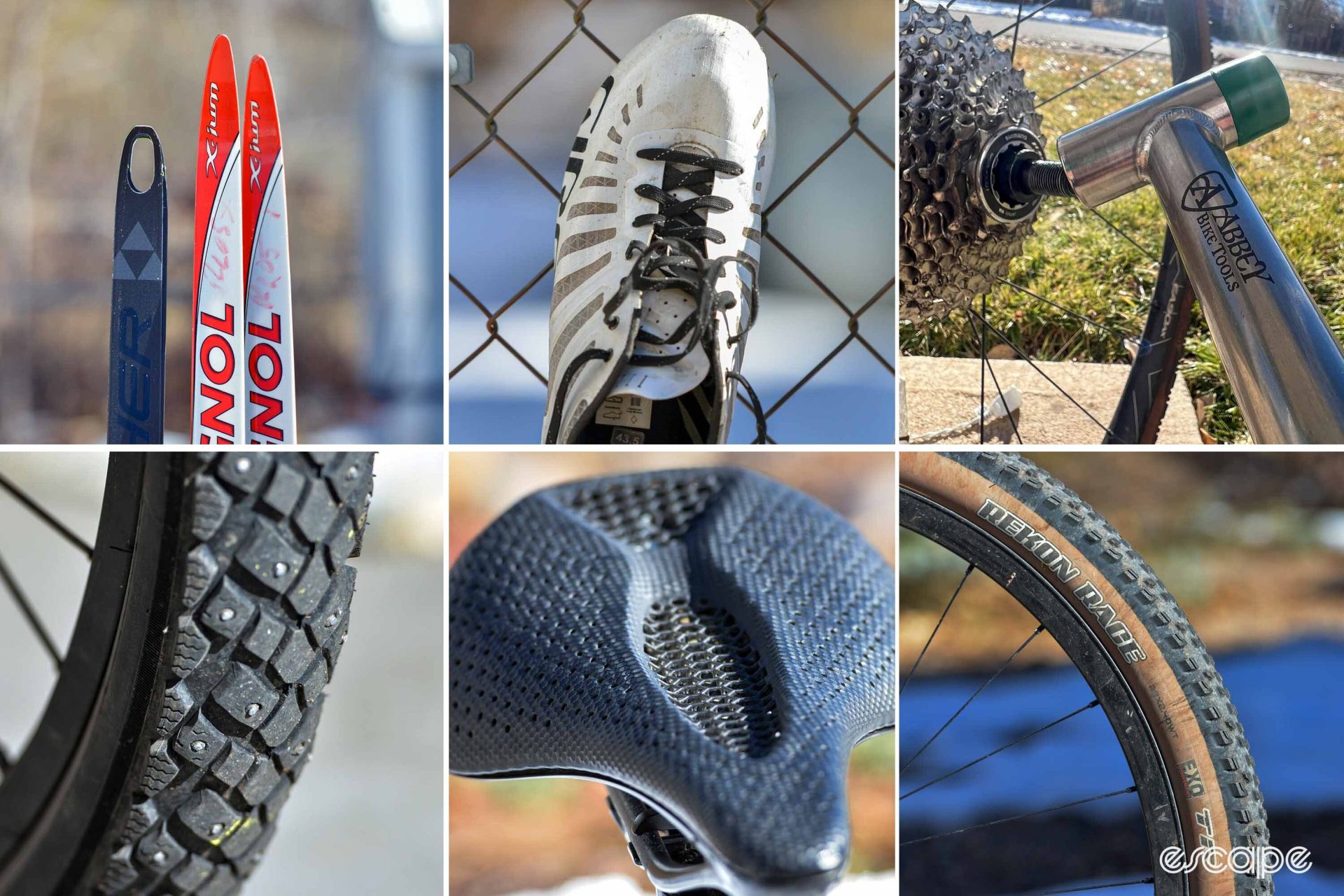I had a quick look at my annual ride totals on Strava before setting out to make this list. A couple of things stood out. I spent more time on our Urban Arrow cargo bike than any other bike this year, which has become the norm. I spent more time skiing than I did riding road bikes (I also did more ski races than cycling races). I truly embraced my cross-country bike, a Specialized Epic EVO, and the vast majority of my “real rides” were on it, more than 90% of them in fact.
Those are all massive shifts from even a few years ago and are reflected in the list below. My days of daily morning road rides with a group of buddies in Boulder are over; the days of twice-daily cargo bike commutes and sneaking in 57 minutes on the nearby trails at lunch are here.
Nothing stays the same forever. Kids will certainly teach you that. But it’s somehow comforting to know that even as my riding changes in dramatic ways, my relationship with bikes and exercise and my body in general hasn’t. I’ve come to realize that I just like feeling fit and I like being outside, and the equipment I’m on to do that isn’t particularly relevant. Flat bars or drop bars or skate skis all fill the same hole in my soul they always have, and always will.
So here are a few of the products that influenced my relationship with my own physical self this year.
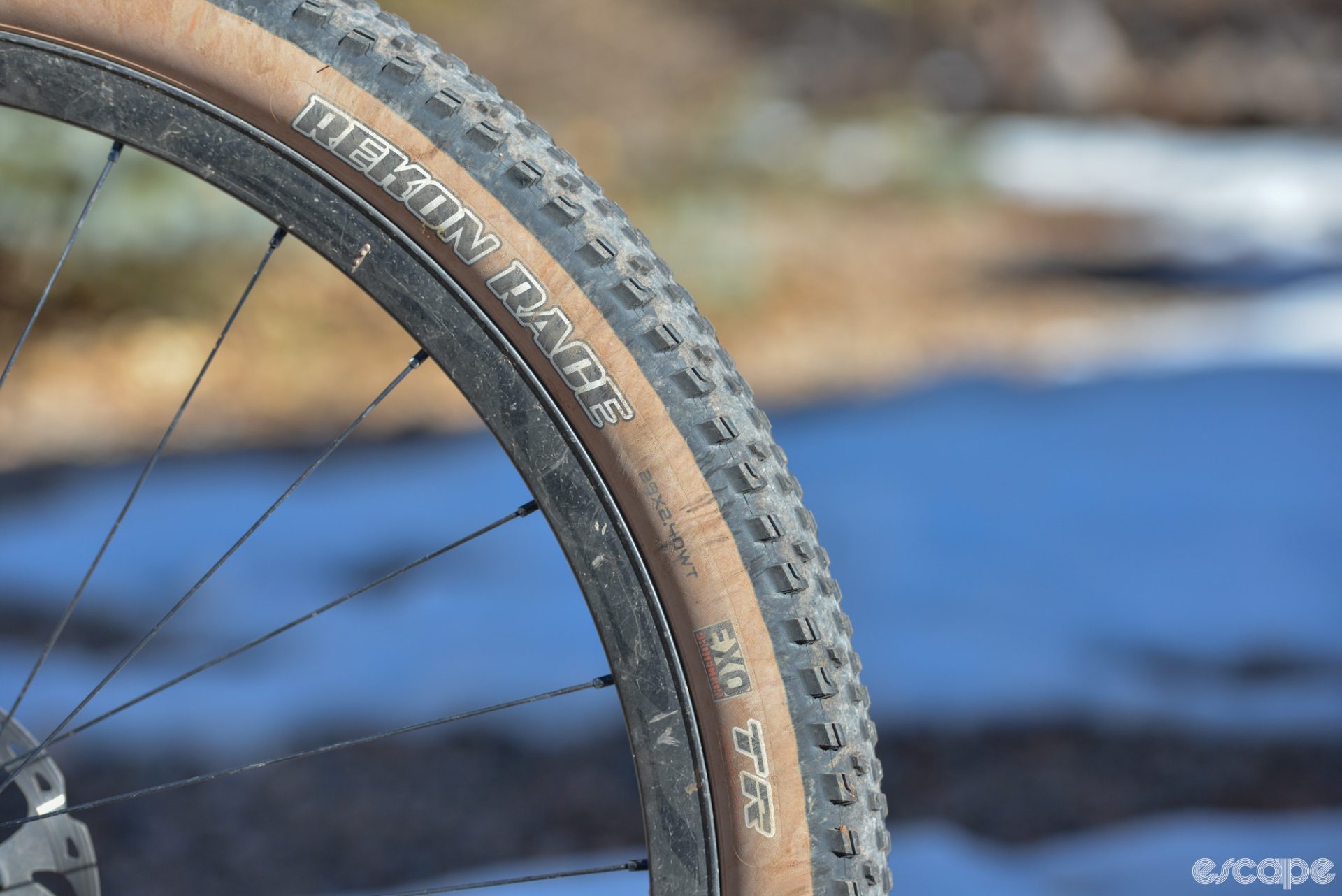
Maxxis Rekon Race
I’ve picked a particular set of tires here, but what I’m actually advocating for is finding the tire that matches the way you ride and where you ride. Not the way you want to ride and the places you wished you rode, the actual rides you do.
Long story short: You might have more fun, and go faster, with less bike and less tire.
This product pick is actually a two-parter. Running light, thin, low-knob mountain bike tires is only something that’s been feasible (for me anyway) since the advent of tire liners. I have a set of the Cushcore XC liners in my cross-country bike and their flat-reducing presence is what allows me to run lighter, faster tires all year.
I was pro big-tire for a long time. The 2.5” Maxxis Minion on a big trail bike was my combo of choice. But I don’t ride trails that are quite as nasty anymore, and thus my habits have tended toward cross country as of late. The speed to be found with a true race tire is addicting.
What’s not fun is flatting, which was always the problem with these lighter tires in the past. But with the inserts, modern tire construction, sealant, and the occasional Dynaplug, ride-ending flats are mostly a thing of the past (unless you’re doing something silly like riding your gravel bike on real mountain bike trails. There are limits to everything).
I have a general theory around the intersection of bike capability, trail difficulty, and resultant fun. It can be summed up with this chart, which is entirely my personal experience, your mileage may vary:
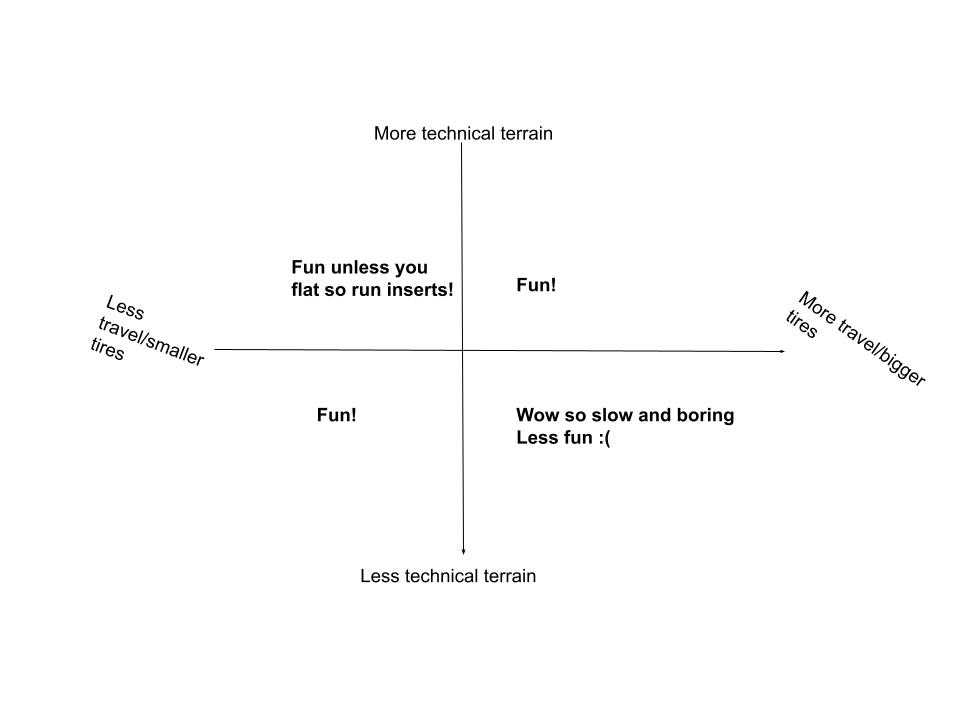
Unfortunately, I think many riders put themselves into the bottom right quadrant, mostly as a result of marketing-induced optimism. Everyone thinks they need a 150mm trail bike and big, meaty tires. They’re riding trails, right? They want to shred the gnar! But almost nobody needs a 150mm trail bike and big, meaty tires. Riders are sold on trail bikes with claims like “climbs like an XC bike, descends like a downhill bike,” and both those things are bullshit. You know what climbs like an XC bike? An XC bike. You know what rolls like an XC tire? An XC tire.
Given the capabilities of modern XC bikes, riding them on 98% of the mountain bike trails on this planet is not underbiking. It’s proper-biking.
Instead, people buy a bike for the 2% of their trails that are truly difficult and their big, 150 mm trail bike wallows in its travel and hums on its huge 2.5” Minions the rest of the time. Most of their riding is slower and worse. In an era when ultra-capable cross-country bikes (call them downcountry if you want) are a thing, the lure of a trail bike and trail tires diminishes rapidly.
(I feel the same way about people buying 115 mm-underfoot powder skis to ski groomers 95% of the time, but this is neither the time nor the place for that particular rant.)
Anyway. The Rekon Race is superb because it combines with a capable XC or light trail bike to go silly fast, yet is surprisingly durable. It’s only marginally more grippy than Maxxis’ all-out XC tire, the Aspen. On loose surfaces it’s downright hilarious but in a fun way. It hooks up better than the Aspen, at least, and lasts a bit longer too. I’ve tried a few different versions and have mostly settled on the 29×2.4 Dual Compound, 60TPI version, which is 828 g claimed and better suited to our rocky trails (even inserts can’t help if you side-swipe a sharp rock with your sidewall). They’re expensive, but I tend to flat maybe once a year these days, and can usually fix the problem with a Dynaplug.
Price: US $65
www.maxxis.com
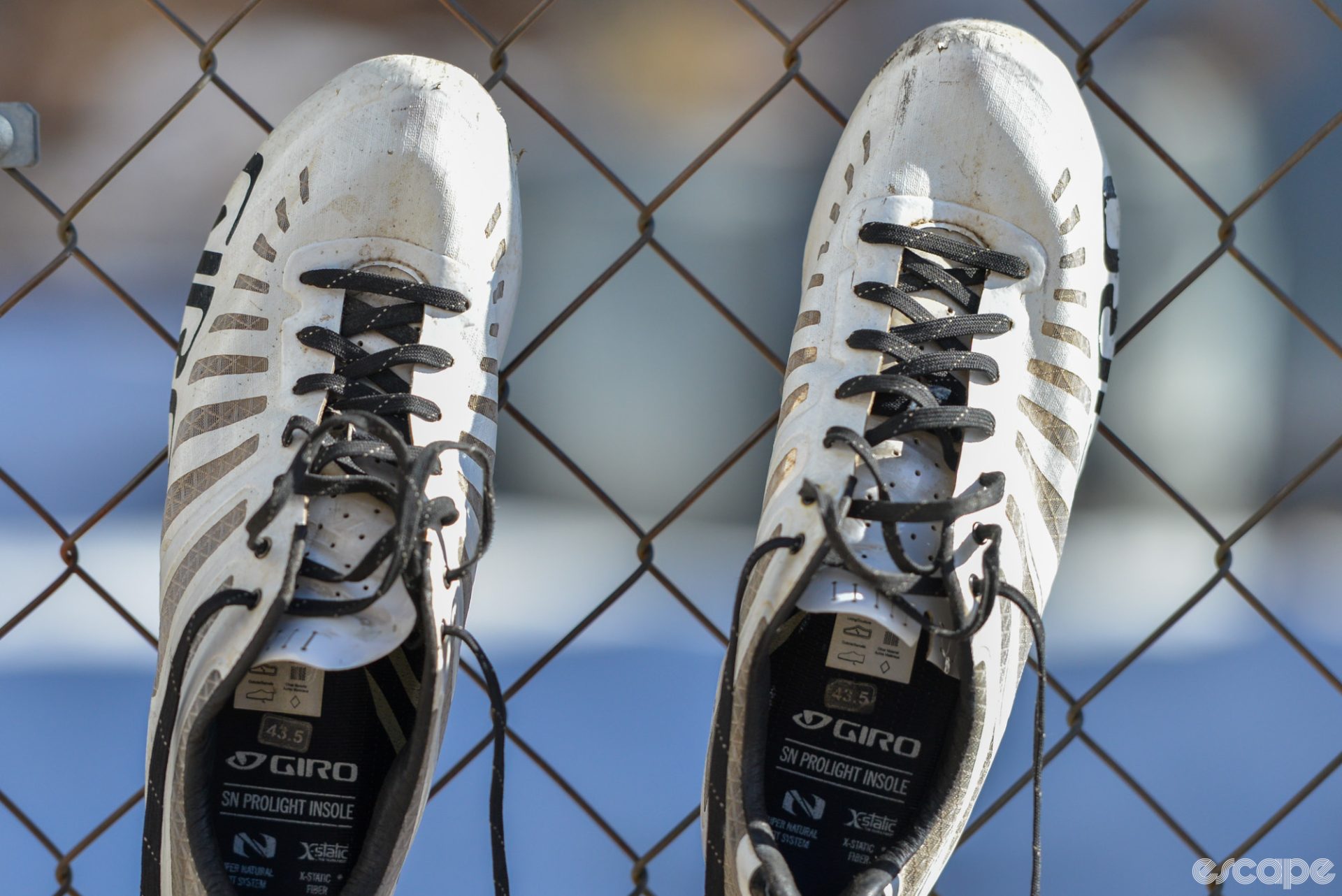
Giro Empire SLX
These remain my go-to road shoes more than three years after I first tested the pair over at The Old Place. They are beat to hell and will probably fully fall apart sometime this year (partly because one of my bikes has toe overlap when run with big tires) but I will wear them to the bitter end.
Given my decreased road riding, having stuff I can pick up that feels like home is even more crucial. I would sometimes go weeks without a road ride this year, but if I had these shoes on I always clipped in and felt normal.
I still think laces, when matched with a supple upper like on the Empire SLX, offer the best fit of any closure system. I love how light they are (185 g per shoe), I love the stiff sole, I love how they breathe (the sides are mesh and translucent, you can see your socks through them).
When you find a shoe that works, hold that shoe close. Never let it go.
Shoutout to the Giro Aries Spherical helmet as well, which James had on his list. I grab it more than any other for both cross-country mountain bike rides and road/gravel rides. It does catch a lot of bugs (listeners to the Placeholders pod will know of my issues there) but that’s because it catches a lot of nice, cool air. Giro’s been through the wringer as a company in recent years but they continue to make great stuff.
Price: US $375 / £330 / €370
www.giro.com
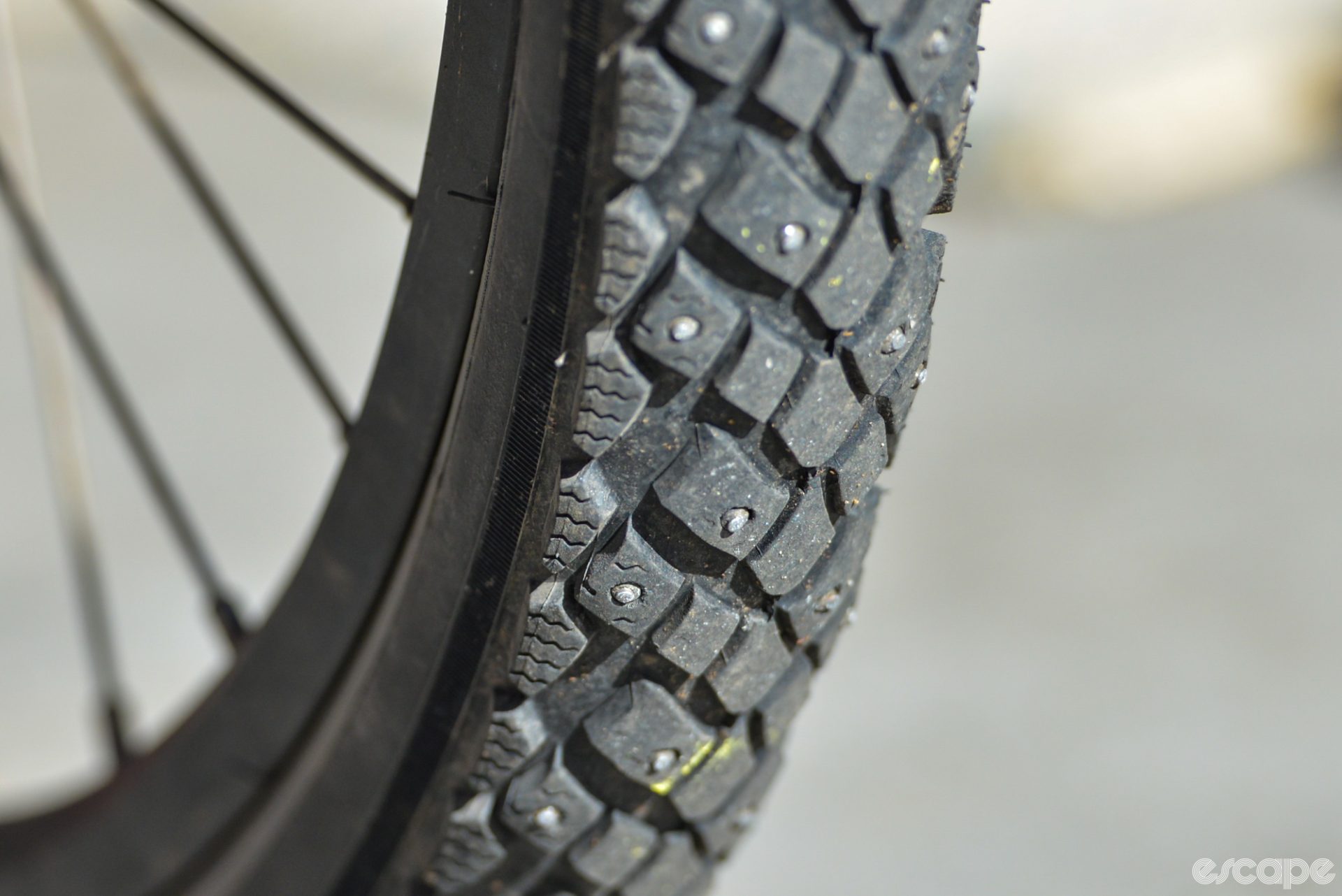
Schwalbe Marathon Winter Plus studded tires
I’m sure I look like an absolute lunatic riding our cargo bike across town in the middle of a blizzard to drop off our daughter, but I also move faster and feel safer than I would in a car in those conditions.
That’s because our Urban Arrow is set up with Schwalbe Marathon Winter Plus studded snow tires. We have the 20” version on the front wheel and the 26” on the rear and we can get through just about anything.
Dozens of tungsten carbon spikes dot the widely-spaced, soft rubber and inspire an incredible amount of confidence when things get icy. Run at low pressure, the spikes dig into even hard, early-morning ice and keep us upright and pointed in the right direction.
We’re on our second season on this set and while there is a bit of wear and deformation on the spikes, the rubber has plenty of life left and the grip is still as good as it ever was.
Price: Varies depending on size, US $85 per tire for the 700c version
www.schwalbe.com
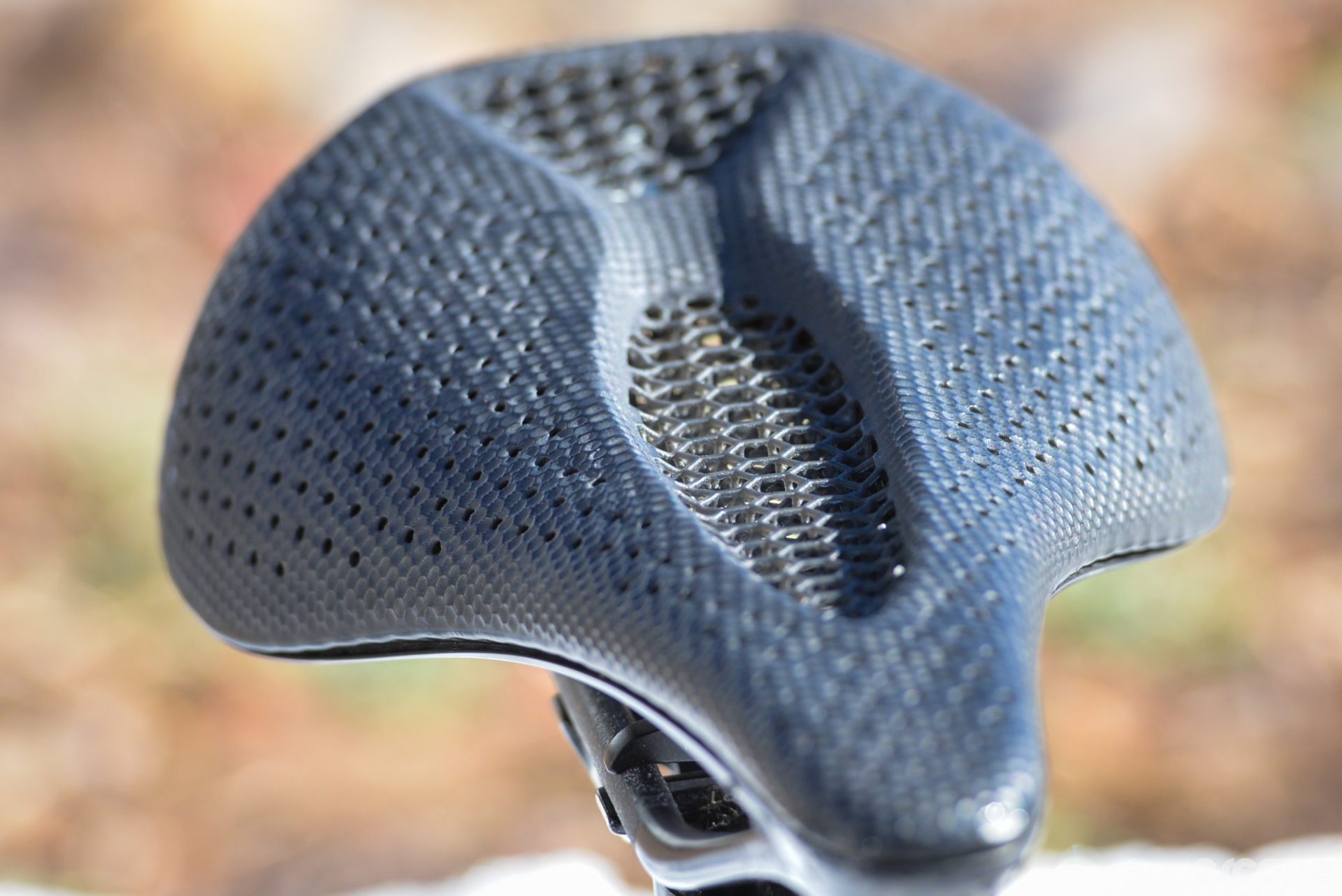
Specialized Power Pro Mirror saddle
I have extolled the virtues of the Power Mirror 3D-printed saddles numerous times. This year, I acquired two more, so I now have one on every bike I regularly ride. They are the best.
The latest is a titanium-railed Power Pro model, which drops the price from an extortionary $450 to a merely ridiculous $325. (The model in the photo is the carbon-railed S-Works version because the ti-railed saddle is on a bike currently getting suspension service done.)
These remain the best saddles I’ve ever used. Road, mountain, gravel, it doesn’t matter. You feel planted on them, they’re comfortable, they’re light, and they look good. The 3D-printed Mirror tech is incredible. I don’t know why or how it works, but it does. Try one.
My only small complaint is that when used on a mountain bike with a dropper post, the somewhat grabby Mirror material can grab at the inside of your thighs when the dropper is down. Some sort of cap or smooth surface on the sides of the saddle would help.
Price: US $325 / £270 / €320 / AU $500
www.specialized.com
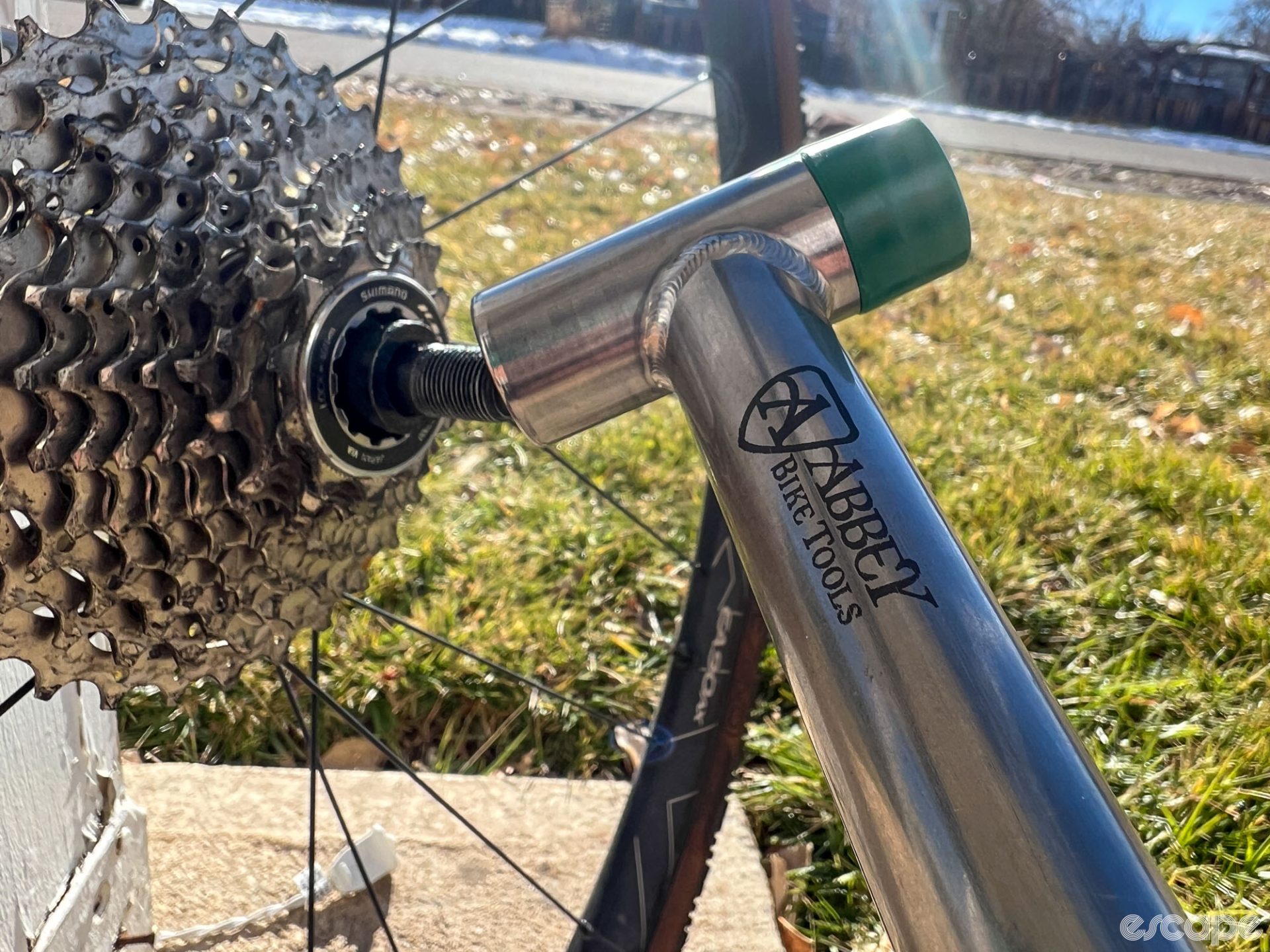
A special hammer AKA the hammer Dave Rome doesn’t have
My tool collection is utilitarian. I buy a tool when I need it, I buy one of them, and I don’t worry that much about whether Dave Rome would approve of my purchase. [? – Ed.] I only work on my own bikes and, honestly, modern bikes don’t take that much work. I’m not over here wearing out hex keys like a goddamn maniac. I will lose any 4 mm before I wear it out.
So when Abbey tools sent me a hammer, out of the blue, and informed me that it was a hammer that Dave Rome didn’t have and maybe could never have, I knew this was something special.
They sent it to me, I think, because my nickname was The Hammer back when Dave, James, and I made Nerd Alert together. I’ve embraced this – my role, as I see it, is to bring the obsessives back down to earth on occasion and force them to look at mechanical problems like somebody who just wants the damn bike to work and doesn’t really care how we get there.
So I have this hammer. It’s special for some reason both Abbey and Dave have explained to me, but I felt it was mostly special because I have one and Dave doesn’t. It minimizes wrist fatigue maybe? Who knows. I have used it for many things. It tapped nails into the walls of our new house so I could hang photos and art, for example. It popped out a small dent in the aluminum of our camper. But mostly it just sits on the tool board, a beacon of quality amid my normal instruments of mediocrity.
And then, after nearly a year of being oh-so-pleased with myself, Dave visited Abbey and got one for himself. Sad.
Price: US $189 (LOL what) for the Ti version
www.abbeybiketools.com
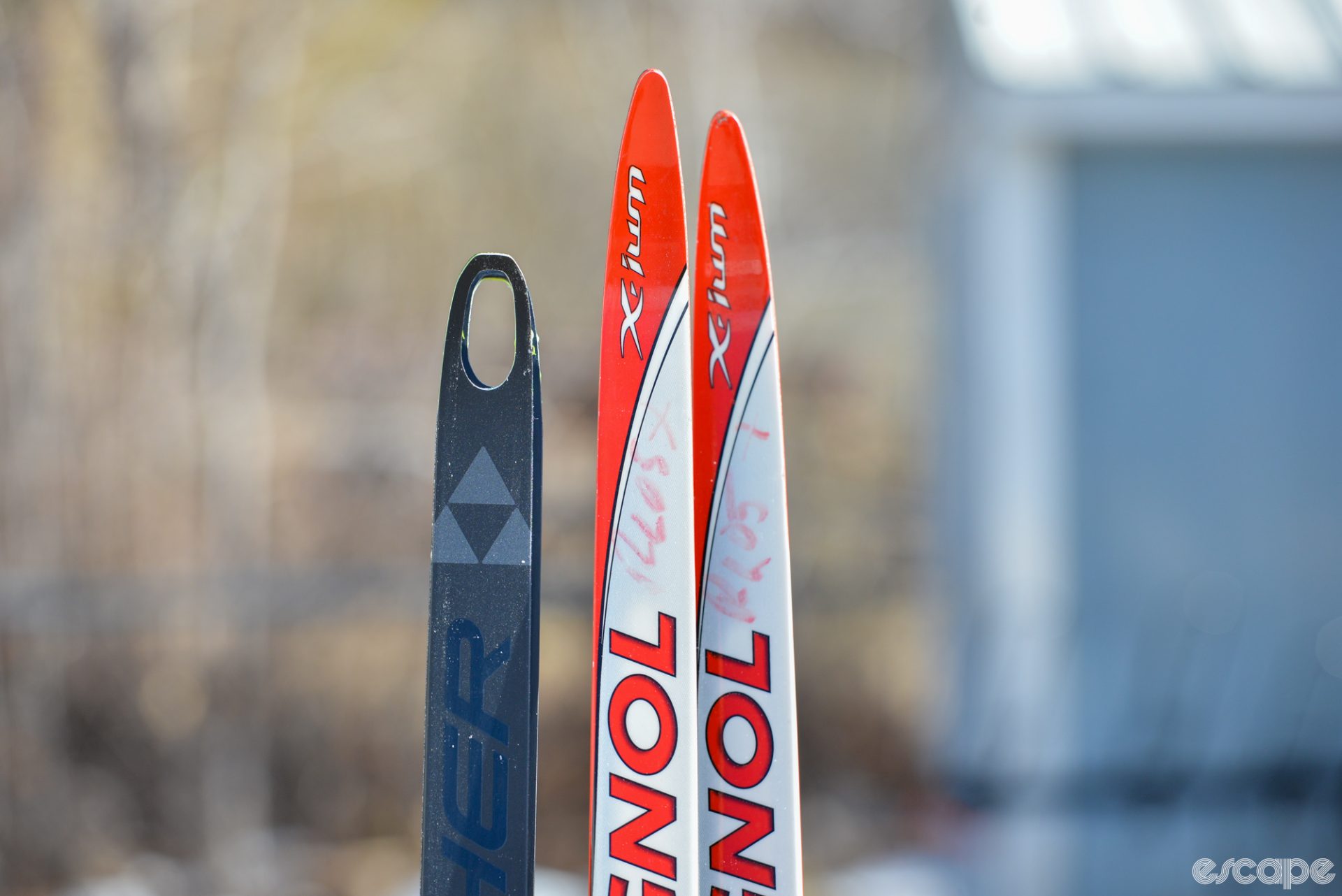
Skate skis (Specifically some Fischer RCS)
The feeling of gliding over snow through sun-dappled woods is one everybody should experience. Skate skiing (the activity on nordic skis that looks like ice skating, rather than classic skiing, which looks more like running) is my winter activity of choice. It’s not unusual these days for me to ride zero times outside between December and March, and that’s not only fine, it’s preferred.
I live in a place where riding outside in the winter swings between impossible and not particularly enjoyable. There are a few flat-ish road loops, most of the mountain bike trails are either officially closed for the season or just mostly unrideable. Zwift is great, and I’ve come to embrace it mostly due to the time constraints of parenthood, but it’s also NOT GREAT. Right? It’s not great. It’s a means to an end.
I come out of a winter of skiing stronger overall than I ever get riding. My back pain goes away. Skiing lets me stay fit, build actual core strength without having to do planks, and get outside when the weather sucks for riding. The number of readers out there who live somewhere with available nordic trails is vanishingly small, I’m sure, but if you fall in that group and you don’t currently ski, what on earth are you doing with your winters?
Price: $550 for the Fischer RCS that I love and think are a perfect entry to race-level gear. Plus $100 for bindings, $200 for decent poles, and $200 or so for boots. Just over $1,000 USD all-in.
But really, buy used if you’re just starting out, anything from 2005 onwards is going to be perfectly adequate. The skis on the right in the photo above are my old race skis from 2002 and I was still racing them until quite recently. Full setup (boots, skis, pokes) should be less than $350 if you look around.
This is the fourth in our annual Favorite Things series. Read on for James Huang’s picks that definitely don’t include his Urban Arrow, Joe Lindsey’s unhinged ramblings have been quarantined, and of course you will be shocked to find tools among Dave Rome’s selections. We wrap up next week with Ronan Mc Laughlin and Iain Treloar. Stay tuned.
Did we do a good job with this story?
